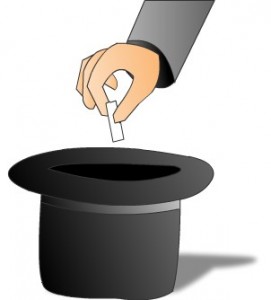Probability > Stochastic Model
What is a Stochastic Model?
A stochastic model represents a situation where uncertainty is present. In other words, it’s a model for a process that has some kind of randomness. The word stochastic comes from the Greek word stokhazesthai meaning to aim or guess. In the real word, uncertainty is a part of everyday life, so a stochastic model could literally represent anything. The opposite is a deterministic model, which predicts outcomes with 100% certainty. Deterministic models always have a set of equations that describe the system inputs and outputs exactly. On the other hand, stochastic models will likely produce different results every time the model is run.
All stochastic models have the following in common:
- They reflect all aspects of the problem being studied,
- Probabilities are assigned to events within the model,
- Those probabilities can be used to make predictions or supply other relevant information about the process.

Formal Definition of a Stochastic Process
A stochastic process is a family of random variables {Xθ}, where the parameter θ is drawn from an index set Θ. For example, let’s say the index set is “time”. For a continuous process, the random variables are denoted by {Xt}, and for a discrete process they are denoted by {Xn}. “Time” is one of the most common index sets; another is vectors, represented by {Xu,v}, where u,v is the position (Breuer, 2014).
One example of a stochastic process that evolves over time is the number of customers (X) in a checkout line. As time t changes, so does X — customers come and go, one or more at a time. X will fluctuate a little if time is sampled in close intervals (say, one second). Fluctuations in X will be much larger for greater intervals. For example, if t is measured every hour, then the number of customers could change by tens, hundreds, or even thousands at a time.
Which Process Do I Choose?
There aren’t clear lines between what models qualify as stochastic or deterministic. What one person thinks is a random process, another might see a deterministic process. For example, probabilities for stochastic models are largely subjective. One person might assign the odds of flipping a coin as a deterministic 50/50 chance of getting heads. Another person might say that that would happen only when the coin is perfectly balanced and fair, so a stochastic model might be appropriate.
Which process you choose to use is mostly up to you, but each has its own advantages. Deterministic models are easier to analyze. Stochastic models tend to be more realistic, especially for small samples.
Chaotic Models
The line between the two models is further blurred by the development of chaos theory. Chaos theory involves deterministic model that can have different outcomes with slight changes in the model. Some argue that most stochastic models are in fact chaotic deterministic models, a thought which is summed up nicely by Lothar Breuer of the University of Kent:
“A mountain stream, a beating heart, a smallpox epidemic, and a column of rising smoke are all examples of dynamic phenomena that sometimes seem to behave randomly. In actuality, such processes exhibit a special order that scientists and engineers are only just beginning to understand. This special order is deterministic chaos’, or chaos, for short.”
And while chaos theory supplies a viable alternative to deterministic or stochastic models, it’s applications to probability theory is still in its infancy.
Steps for Building a Stochastic Model
The basic steps to build a stochastic model are:
- Create the sample space (Ω) — a list of all possible outcomes,
- Assign probabilities to sample space elements,
- Identify the events of interest,
- Calculate the probabilities for the events of interest.
Need help? Check out our tutoring page!
A very simple example of this process in action: You are rolling a die in a casino. If you roll a six or a one, you win $10. The steps would be:
- The sample space includes all possibilities for die roll outcomes: Ω = {1,2,3,4,5,6}.
- The probability for any number being rolled is 1/6.
- The event of interest is “roll a 6 or roll a 1”.
- The probability for “roll a 6 or 1” is 1/6 + 1/6 = 2/6 = 1/3.
References:
Breuer, L. (Undated). Introduction to Stochastic Processes. Retrieved November 2, 2011 from: https://www.kent.ac.uk/smsas/personal/lb209/files/sp07.pdf
Ionut Florescu (2014). Probability and Stochastic Processes. John Wiley & Sons.